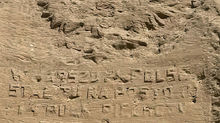6 Squadron use of Clock Code
- Steve Johnson

- Feb 27, 2019
- 1 min read
Updated: Jul 8, 2025
During WW1, RAF squadrons which supported the allied artillery adopted a clock code system to report aiming corrections to the gunnery officer on the ground. Aerial photographs, at a height of between four and five thousand feet, were taken the day prior to the mission, with a clock code superimposed on each photograph, in alignment with the points of the compass. Though the complete clock code employed concentric circles set at Y (0 to 10 yards), Z (11 to 25 yards), A (26 to 50 yards), B (51 to 100 yards), C (101 to 200 yards), D (201 to 300 yards), E (301 to 400 yards) and F (401 to 500 yards), in practice 6 Squadron printed only the A, B and C rings, though fine corrections were interpreted when necessary for the Y and Z rings. Anything outside the accepted range was regarded as a 'washout' and the letter 'W' was transmitted so that the gunnery officer could re-align the gun used in ranging on to the target. I have attached two examples of 6 Squadron 'shoots', both in early July 1917, just after the attack at Messine, with the lower photograph at Zandvoorde showing the accuracy achieved by the artillery shells (see red marks) and the upper photograph at Hollebeke showing that two targets were attacked at approximately the same location.















































Comments